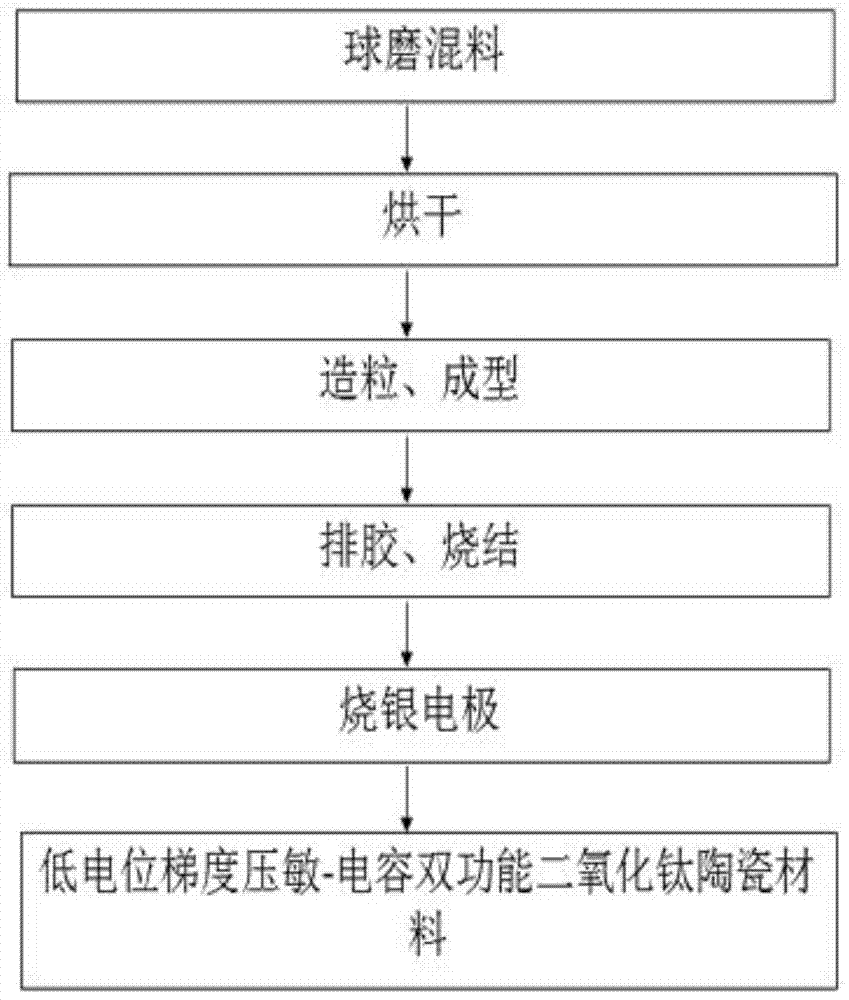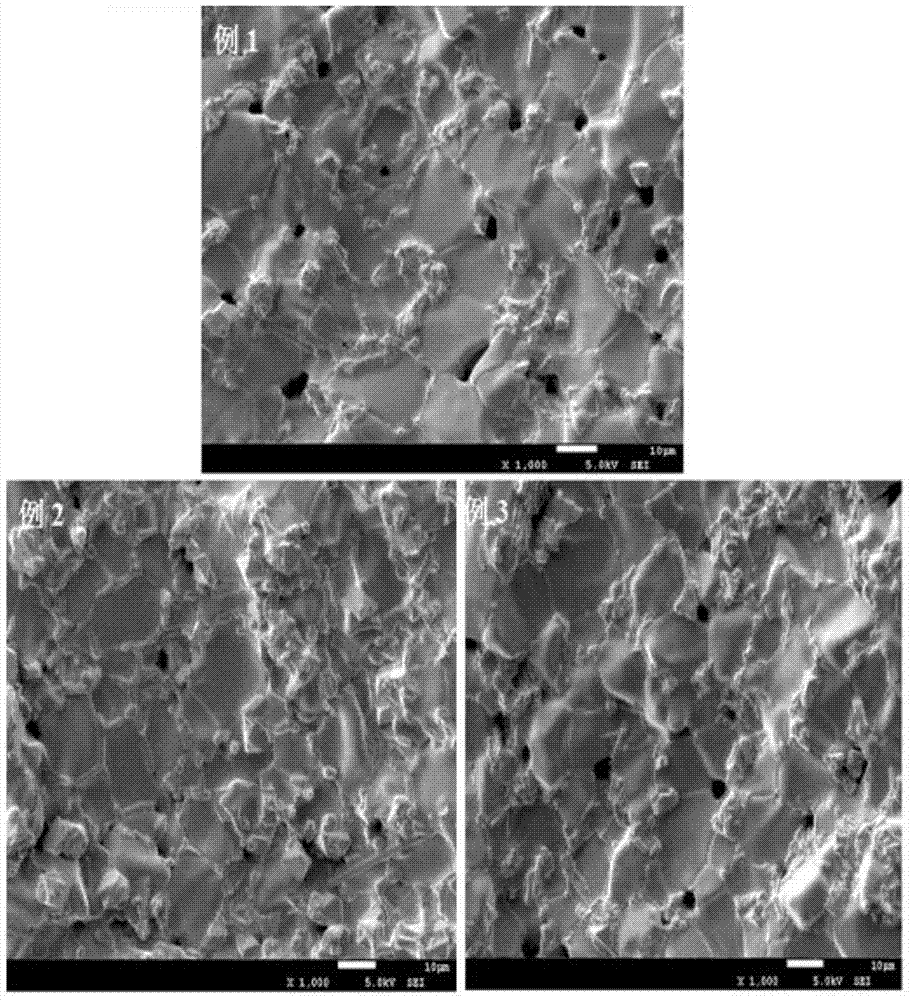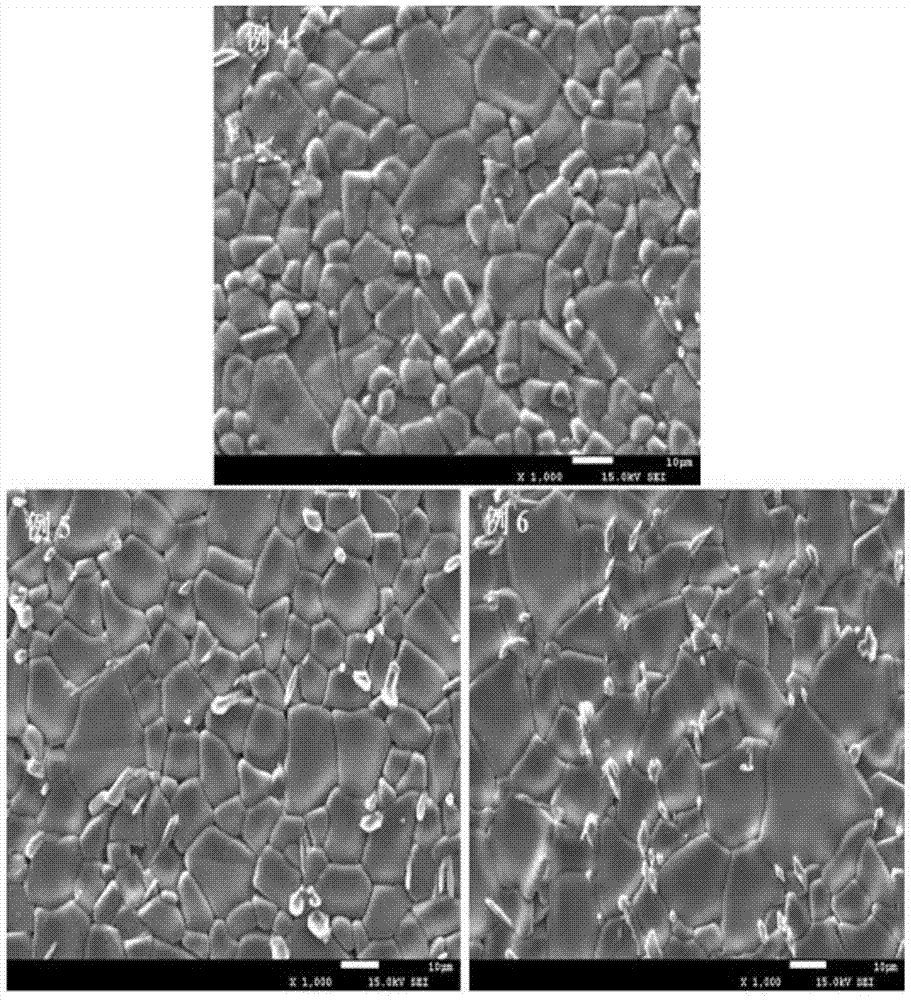A low-potential gradient varistor-capacitance bifunctional titanium dioxide ceramic material and its preparation method
A technology of titanium dioxide and ceramic materials, applied in the direction of piezoelectric/electrostrictive/magnetostrictive devices, circuits, electrical components, etc., can solve the problems of increasing production costs and increasing the process, achieving small potential gradients and simplifying the sintering process , good overall performance
- Summary
- Abstract
- Description
- Claims
- Application Information
AI Technical Summary
Problems solved by technology
Method used
Image
Examples
Embodiment 1
[0027] Micron-sized powder according to 99.0mol%TiO 2 , Nb 2 o 5 0.6mol%, 0.3mol%SiO 2 , 0.1mol%Sm 2 o 3 Proportional weighing, after mixing, add to the agate grinding tank, add absolute ethanol as a lubricant, wet ball mill until the powder is fully mixed, and dry the fully mixed powder at 60 °C. Add 5.wt% polyvinyl alcohol (PVA) as a binder, and dry press it into a green body. The green body was placed in the furnace and slowly heated to 400 °C for 1 h for debinding treatment, then heated to 1450 °C for 2 h, then cooled to room temperature with the furnace, and kept at 870 °C for 1 h to burn silver electrodes. The resulting titanium dioxide ceramics were tested for performance, and the potential gradient (E 1mA ) is 9.3 V / mm, the nonlinear coefficient (α) is 2.74, and the relative permittivity (ε r ) is 4.9 x 10 4 , the loss angle (tanδ) is 0.57.
Embodiment 2
[0029] Micron-sized powder according to 99.0mol%TiO 2 , 0.5%molNb 2 o 5 , 0.2mol%SiO 2 , 0.3%molSm 2 o 3 Proportional weighing. After mixing, put it into the agate grinding tank, add absolute ethanol as lubricant, wet ball mill until the powder is fully mixed, and dry the fully mixed powder at 70 °C. Add 6.wt% polyvinyl alcohol (PVA) as a binder, and dry press it into a green body. The green body was placed in the furnace and slowly heated to 400 °C for 1 h for debinding treatment, then heated to 1450 °C for 2 h, then cooled to room temperature with the furnace, and kept at 870 °C for 1 h to burn silver electrodes. The resulting titanium dioxide ceramics were tested for performance, and the voltage gradient was (E 1mA ) 13.1 V / mm, nonlinear coefficient (α) is 4.10, relative permittivity (ε r ) is 9.5 x 10 4 , the loss angle (tanδ) is 0.52.
Embodiment 3
[0031] Micron-sized powder according to 99.1%molTiO 2 , 0.6%molNb 2 o 5 , 0.1%molSiO 2 , 0.2%molSm 2 o 3 Proportional weighing. After mixing, put it into the agate grinding tank, add acetone as lubricant, wet ball mill until the powder is fully mixed, and dry the fully mixed powder at 75 °C. Add 7.wt% polyvinyl alcohol (PVA) as a binder, and dry press it into a green body. The green body was placed in a furnace and slowly heated to 400 °C for 1.5 h for debinding treatment, then heated to 1350 °C for 4 h, then cooled to room temperature with the furnace, and silver electrodes were fired at 870 °C for 1 h. The resulting titanium dioxide ceramics were tested for performance, and the potential gradient (E 1mA ) is 9.8 V / mm, the nonlinear coefficient (α) is 4.13, and the relative permittivity (ε r ) is 9.0 x 10 4 , the loss angle (tanδ) is 0.45.
PUM
| Property | Measurement | Unit |
|---|---|---|
| particle size | aaaaa | aaaaa |
| relative permittivity | aaaaa | aaaaa |
| relative permittivity | aaaaa | aaaaa |
Abstract
Description
Claims
Application Information
 Login to View More
Login to View More - R&D
- Intellectual Property
- Life Sciences
- Materials
- Tech Scout
- Unparalleled Data Quality
- Higher Quality Content
- 60% Fewer Hallucinations
Browse by: Latest US Patents, China's latest patents, Technical Efficacy Thesaurus, Application Domain, Technology Topic, Popular Technical Reports.
© 2025 PatSnap. All rights reserved.Legal|Privacy policy|Modern Slavery Act Transparency Statement|Sitemap|About US| Contact US: help@patsnap.com



